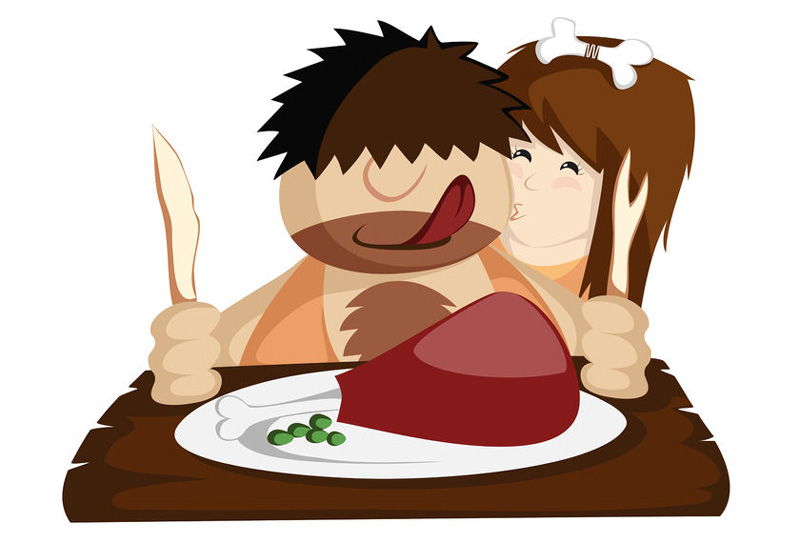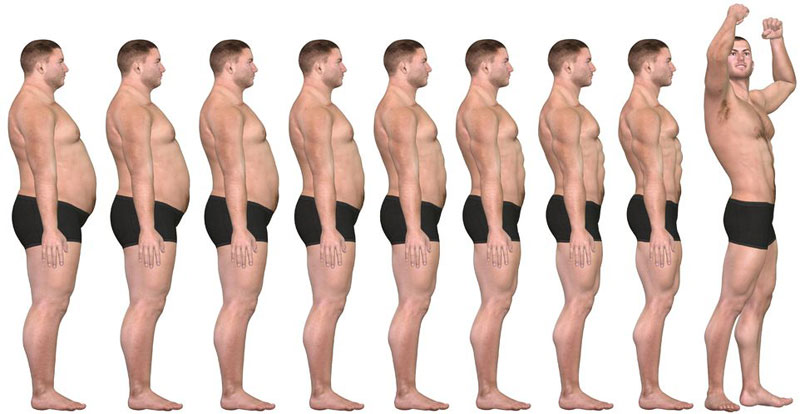November 2017 NewsBlast | Article 2
20 Nov 2017 / NAFCNAFC NewsBlast - Novemeber 2017 | Ed 2
Strategies for Fall Prevention and Avoiding Injury
Written by: Tammy LeBoss, The FitPro Foodie
Sources: Center for Disease Control, SmartCells™, NAFC Mat Pilates™
 Copyright: https://www.123rf.com/profile_martinan'>martinan / 123RF Stock Photo
Copyright: https://www.123rf.com/profile_martinan'>martinan / 123RF Stock Photo
Best Ways to Avoid Injury When Falling
“And all at once summer collapsed into fall.” –Oscar Wilde.
As the seasons change, the increased chances of rain or snow and fallen leaves make falling more likely to take place. Falls can happen at any time, not only for our elderly loved ones but also for regular exercisers who expose themselves to potential outdoor hazards. While slips and falls may be a seasonal concern for younger generations, our elderly loved ones face the potential dangers of slips and falls on a daily basis.
According to Center for Disease Control, 30-35% of people over age 65 fall each year, one in five of those falls involve a serious injury, and 65% of those falls result in an emergency room visit. A bone fracture or any other fall-related injury can be extremely dangerous and is often considered the beginning of an elderly person’s demise. In fact, the CDC also found that “approximately 20% of older adults hospitalized for a hip fracture die within a year and about 50% will suffer a major decline in independence.”
Through awareness and preventative measures, these numbers can be greatly reduced. Regardless of the season or age group, everyone needs to understand the causes of falling and take preventative measures.
The Best Way for Preventing Falls
What is the best way to take a stand against falling and avoid injury? You guessed it, through exercising! Remember the old adage: If you don’t use it, you lose it. Strategies for reducing the risk of a fall include:
- Learning different ways to strengthen the core muscles
- Incorporating ways of challenging our balance
- Strengthen the gluteal muscles (do more squats)
- Taking walks to strengthen the muscles necessary to keep us upright.
Walking is a great form of ‘moving meditation’ that can improve body awareness and proprioception.
Fall in love with walking using these pro tips:
- Make sure walkways are well-lit and cleared of clutter
- Choose your route wisely- avoid sidewalks that have cracks, holes, or any other irregularities
- Train your eyes to ‘see all’ scanning continuously for potential hazards
- Avoid walking in stormy weather, especially during rain, snow or fog
- Walk in areas of good visibility and traction
- Look for cleared and well-maintained areas
- Walk with a companion who can warn you about potential hazards (2 sets of eyes are better than one)
- Be prepared with the right gear and wear shoes with good traction soles
- Learn to walk in your neutral spine (apply NAFC ANSER™)
- Pay attention to your heel strike, pronation, and supination of the feet (learn more through NAFC Mat and Reformer Pilates).
Another way to take a stand to prevent falls involves learning how to fall safely. There are three basic types of falls: front falling, side falling and backwards falling. Each type requires its own techniques to reduce injuries and land in a safer manner. According to experts at Five Star Senior Living and Texas Women’s University, to reduce the likelihood of an injury, here are some tips to apply in case of a fall:
For Forward Falls
- Hit ground with entire palm and forearm- This reduces the likelihood of a wrist fracture.
- Turn your head to the side- Reduces risk of hitting your nose or mouth on the ground.
- Try to land on your palms and forearms in a pushup position without letting the rest of your body touch the ground.
- Breathe out
- Avoid Locking your joints
For Side Falls
- Hit ground with entire palm and forearm on the side you fall on- If left side use left arm etc.
- Grab your hip with opposite arm- If falling to left use right arm to grab hip
- Tuck your chin to your chest to avoid your head hitting the ground.
- Squat
- Try to roll to your back
- Avoid landing directly on your hip
For Backward Falls
- Bend at knees and squat
- Tuck chin to avoid hitting head
- Hit the ground with forearms first
- Round Back
There are many precautions we can take in order to reduce the likelihood of a fall and any fall-related injuries. Using a combination of exercises, falling techniques, basic indoor/outdoor changes and applying an understanding of the causes—are great places to start a graceful falling into fall and winter. Share this article with a loved one to prevent them from falling ☺
Written by: Tammy LeBoss, The FitPro Foodie
Novemeber 2017 NewsBlast | Article 1
07 Nov 2017 / NAFCNAFC NewsBlast - October 2017 | Ed 2.1
The Truth about the Paleo Diet
Written by: Dr. Max MacCloud, DO, ND, PhD, The Health, Fitness & Nutrition Ninja
Source: My Body Symphony

Copyright: arleevector / 123RF Stock Photo
I founded a company
a while back that makes some of the best plant-based nutritional products on the planet. A key focus was on creating super-nutritious and delicious PLANT-based protein that was also PALEO. As a result of becoming the Leaders in Paleo, Plant-Based Nutrition, people often ask me about various aspects of the PALEO (Paleolithic) Diet. Here are some of my thoughts and opinions on it.
First off,
the vast majority of everything written on the Caveman or Paleo Diet is speculation. By definition, the Paleolithic era predates recorded history. That means there are NO written records and the actual data is extremely limited. I want to be very clear that my speculations and opinions are at odds with some of the better-known paleo writers and advocates.
The Paleolithic / caveman diet
has been around for a LONG time. And I don’t just mean the actual diet since we don’t really know what that was, I mean people speculating about it, writing about it, and promoting it… all that has been going on for many decades.
The biggest issue
I have with many of the “born-again” Paleo gurus out there is the extremely heavy reliance on meat and animal products. The evidence simply doesn’t support those prehistoric people could possibly have consumed as much meat as many claim.
Conspiracy by the Meat Industry
Honestly, it almost seems like the latest Paleo craze is a conspiracy by the meat industry to get Americans back to consuming obscene amounts of meat, pork, and poultry. Over the past few decades, people were finally starting to cut back on their meat consumption based on decades of studies that showed us that too much of it was simply not very healthy. On top of that, we finally came to the realization that people’s obscenely high consumption of meat is the BIGGEST contributor to destabilizing and destroying our environment.
Many books have been written
So, just when people were finally starting to “get it” there is this insane resurgence of high meat consumption. Much of the frenzy was fed by the “CrossFit” phenomenon. That will be the topic of another post (yes, I have some issues with it as well).
Back to the Paleo craze,
I strongly believe that the evidence points to a quite modest intake of animal protein that supplemented a largely vegetarian diet. Do your own research and think about it. Even today, hunters with the highest tech equipment often find it challenging to stalk and kill large animals. Given the primitive weapons of the Paleolithic era, do you really think that they gorged on meat all that often?
Now, meat does have
some very important nutritional benefits, there’s no denying that BUT it is totally possible to get all of those vital nutrients from non-meat sources (at least today). There are in fact, 11 vital nutrients that ONLY occur in meat, nutrients that aren’t the focus of any protein completeness scoring system.
For those who would like more details
If you’d like to learn more about those nutrients and how to get them from a plant-based protein source goto the following link to request a copy of the info to be sent to your email address.
Click here for our Website: My Body Symphony
Written by: Dr. Max MacCloud, DO, ND, PhD, The Health, Fitness & Nutrition Ninja
October 2017 NewsBlast | Article 3
24 Oct 2017 / NAFCNAFC NewsBlast - October 2017 | Ed 2.1
How can I lose weight and add muscle?
Written by: Dr. Max MacCloud, DO, ND, PhD, The Health, Fitness & Nutrition Ninja
Source: My Body Symphony

Copyright: michaeldb / 123RF Stock Photo
People Always Ask Me …
The question that probably comes up more than any other is “How can I lose weight and add muscle?” Let’s examine this in a bit more detail.
First off,
it’s great that people are finally starting to understand that maintaining muscle and lean body mass is vital for overall health AND to help keep excess fat off. That’s huge!
The basic recipe for weight loss
is to consume fewer calories than you burn, pretty simple right? Well, no, it’s not that simple. Think about it, if it were that simply losing weight and keeping it off wouldn’t be THE hardest thing in all of healthcare (there’s like a 90+% failure rate).
Why?
There are LOTS of reasons, some simple, some very complicated but the bottom line is that it is difficult to lose fat and maintain muscle. Fat is MUCH more complicated than we once thought. For hundreds of years, the scientific and medical communities looked at fat as little more than a relatively inert storage site for energy. Of course, it is, but now we know that it’s much more than that. Fat is extremely biologically active. It produces over 20 different proteins and hormone-like substances that help to maintain, grow, and regulate it. Fat is vital to our health and performance. The key is to begin to understand fat’s many roles and to start working with it than continuing the incessant fight to banish it which is clearly a ‘losing’ battle.
So, back to the question,
how to lose fat and maintain muscle. Losing fat requires a calorie deficit which can be created by either increasing activity, decreasing intake or a combination of the two. Maintaining muscle requires adequate calories, protein, and stimulation to keep it from being broken down. There are a dizzying array of hormones, proteins, and other chemical messengers that all come into play that is WAY beyond the scope of what we can cover here.
Many books have been written
about this topic but the goal here is to give you concise, usable info, so here goes. My top recommendation to lose fat (fairly quickly) while maintaining muscle and lean body mass is to utilize intermittent modified fasting. This isn’t your parent’s or grandparent’s cleansing kind of fasting, this is more in line with what the true “Paleo” or Caveman Diet was like. By the way, I’m a big fan of the concept of following an Ancient or Paleo approach… it’s just that I think that 90+% of today’s Paleo zealots have it completely wrong. More on that in a future post.
To be effective
the intermittent fast should be done at least a few days a week with each fast lasting 15-20 hours. It is permissible to consume some nourishment during the “modified” fast period as long as it is extremely low in carbohydrates. There’s plenty of info out there on various approaches, so take a look, play around, and send in any questions you might have.
For those who would like more details
on a fairly comprehensive 21 Day Shred It Program that incorporates Intermittent Modified Fasting using some amazing plant-based protein products that I developed. Go to the following link to have it sent to your email address.
Click here for your: 21 Day Shred Program
Written by: Dr. Max MacCloud, DO, ND, PhD, The Health, Fitness & Nutrition Ninja Website: My Body Symphony
begin ... prev 2 3 4 5 6 7 8 9 10 11 12 13 14

